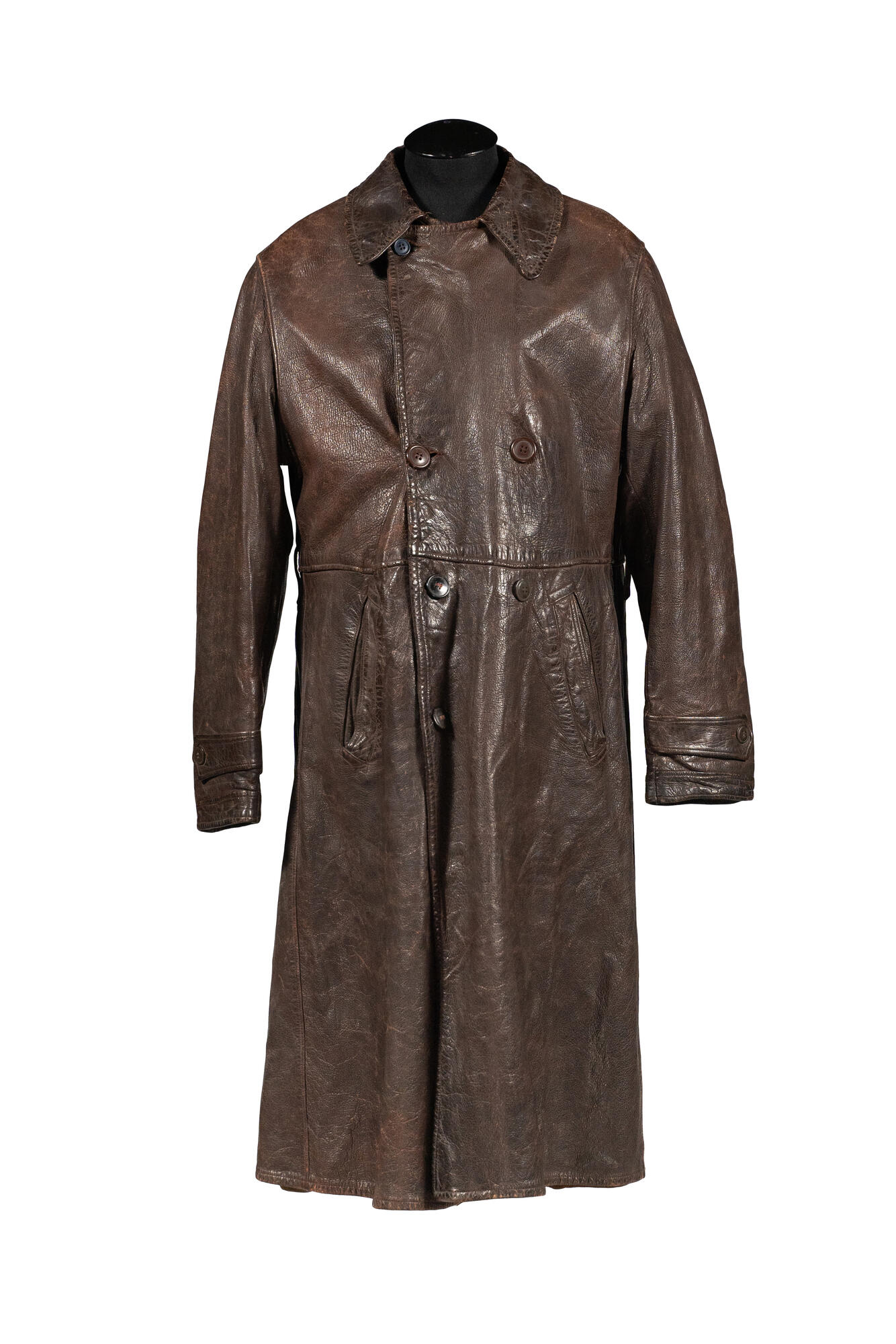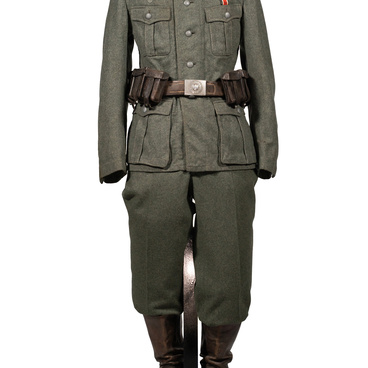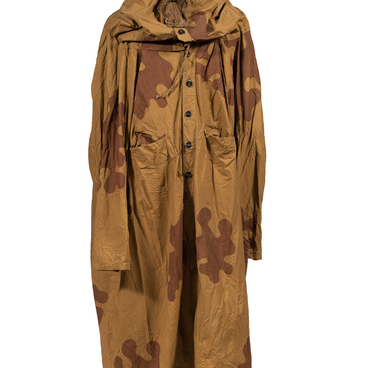The exhibition of the Victory Museum includes the personal possessions of Red Army commanders. This greatcoat used to belong to the Soviet military commander Ivan Stepanovich Konev, Marshal of the Soviet Union, twice Hero of the Soviet Union, and holder of the Order of Victory. He was awarded the honorary title, the Order of Lenin, and the “Gold Star” medal for his bravery, heroism, and skillful management of troops in major operations which resulted in the defeat of large enemy forces.
Ivan Konev was drafted into the Imperial Russian Army in 1916 and participated in World War I. In June 1918, he joined the Bolsheviks and organized a Red Guards formation. Konev fought in the Russian Civil War and later held a series of command duties in the Red Army. In 1926, he completed training courses at the Frunze Military Academy. In June 1941, he was assigned command of the 19th Army.
Ivan Konev joined the Great Patriotic War in July 1941 and participated in the Battle of Smolensk. In September 1941, he was appointed commander of the Western Front. After the defeat of the Western, Bryansk, and Reserve Fronts near Vyazma and Bryansk, Konev was accused of these losses by a special committee but was saved by Georgy Zhukov and assigned commander of the Kalinin Front.
After the Battle of Moscow, Ivan Konev commanded various fronts. On February 20, 1944, he was promoted to Marshal of the Soviet Union. From May 1944 until the end of the war, Konev commanded the 1st Ukrainian Front. In January 1945, Konev’s forces prevented the destruction of the economically significant Silesian industry by the retreating Germans. At the end of the war, Konev’s forces made an invaluable contribution to the Battle of Berlin and retook Prague where they saved the lives of thousands of citizens.
After the war, in June 1945, Konev was appointed head of the Central Group of Forces in Austria and High Commissioner for Austria. In July 1946, he became commander-in-chief of Soviet ground forces and Deputy Minister of Defense of the Soviet Union. In March 1950, he was appointed Chief Inspector of the Soviet Army. In November 1951, he also became commander of the Carpathian Military District.
Ivan Konev was buried in the Kremlin Wall Necropolis.
Ivan Konev was drafted into the Imperial Russian Army in 1916 and participated in World War I. In June 1918, he joined the Bolsheviks and organized a Red Guards formation. Konev fought in the Russian Civil War and later held a series of command duties in the Red Army. In 1926, he completed training courses at the Frunze Military Academy. In June 1941, he was assigned command of the 19th Army.
Ivan Konev joined the Great Patriotic War in July 1941 and participated in the Battle of Smolensk. In September 1941, he was appointed commander of the Western Front. After the defeat of the Western, Bryansk, and Reserve Fronts near Vyazma and Bryansk, Konev was accused of these losses by a special committee but was saved by Georgy Zhukov and assigned commander of the Kalinin Front.
After the Battle of Moscow, Ivan Konev commanded various fronts. On February 20, 1944, he was promoted to Marshal of the Soviet Union. From May 1944 until the end of the war, Konev commanded the 1st Ukrainian Front. In January 1945, Konev’s forces prevented the destruction of the economically significant Silesian industry by the retreating Germans. At the end of the war, Konev’s forces made an invaluable contribution to the Battle of Berlin and retook Prague where they saved the lives of thousands of citizens.
After the war, in June 1945, Konev was appointed head of the Central Group of Forces in Austria and High Commissioner for Austria. In July 1946, he became commander-in-chief of Soviet ground forces and Deputy Minister of Defense of the Soviet Union. In March 1950, he was appointed Chief Inspector of the Soviet Army. In November 1951, he also became commander of the Carpathian Military District.
Ivan Konev was buried in the Kremlin Wall Necropolis.


